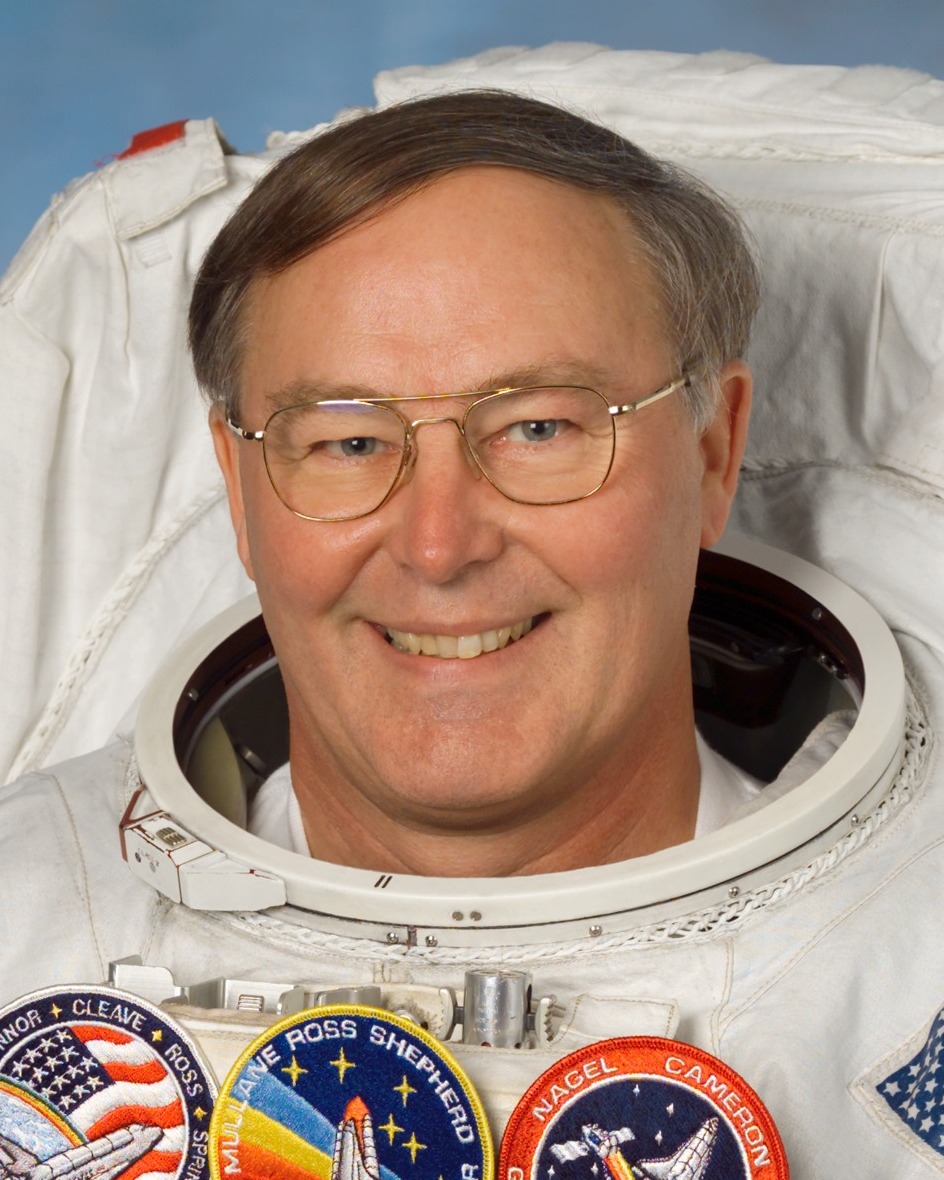Jerry Lynn Ross
| Jerry Lynn Ross | |
|---|---|
 Jerry Lynn Ross | |
| Astronaut NASA | |
| Státní příslušnost | |
| Datum narození | 20. ledna 1948 (74 let) |
| Místo narození | Crown Point, stát Indiana |
| Hodnost | plukovník USAF |
| Čas ve vesmíru | 58 dní, 0 hodin a 52 minut |
| Kosmonaut od | 1980 |
| Mise | STS-61-B, STS-27, STS-37, STS-55, STS-74, STS-88, STS-110 |
| Znaky misí | |
| Pozdější zaměstnání | důchodce |
| Některá data mohou pocházet z datové položky. | |
Jerry Lynn Ross (* 20. ledna 1948 v Crown Point, Indiana, USA) je důstojník letectva a americký kosmonaut. Ve vesmíru byl sedmkrát.
Život
Studium
Střední školu Crown Point High School absolvoval v roce 1966 a pak nastoupil k šestiletému studiu na Purdue University
Zaměstnání
Sloužil v letech 1972 až 1979 u amerického letectva. Oženil se s Karen, rozenou Pearsonovou. V roce 1979 byl přijat do NASA, zprvu jako technik, v roce 1980 se dostal mezi kandidáty astronauty a o rok později do týmu astronautů. U NASA zůstal do odchodu do důchodu v lednu 2012.
Lety do vesmíru
Na oběžnou dráhu se v raketoplánech dostal jako specialista sedmkrát a strávil ve vesmíru 58 dní, 0 hodin a 52 minut. Absolvoval 9 výstupů do volného vesmíru (EVA) a strávil v něm přes 58 hodin. Byl 194 člověkem ve vesmíru.
- STS-61-B Atlantis, (27. listopadu 1985 – 3. prosince 1985)
- STS-27 Atlantis, (2. prosince 1988 – 6. prosince 1988)
- STS-37 Atlantis, (5. dubna 1991 – 11. dubna 1991)
- STS-55 Columbia (26. dubna 1993 – 6. května 1993)
- STS-74 Columbia (12. listopadu 1995 – 20. listopadu 1995)
- STS-88 Endeavour (4. prosince 1998 – 13. prosince 1998)
- STS-110, Atlantis (8. dubna 2002 – 19. dubna 2002)
Odkazy
Externí odkazy
 Obrázky, zvuky či videa k tématu Jerry Lynn Ross na Wikimedia Commons
Obrázky, zvuky či videa k tématu Jerry Lynn Ross na Wikimedia Commons - Web MEK-Kosmo
- Web Space
Média použitá na této stránce
Designed by the crew members, this patch commemorates the first assembly flight to carry United States-built hardware for constructing the International Space Station (ISS). This flight's primary task is to assemble the cornerstone of the Space Station: the Node with the Functional Cargo Block (fgb). The rising sun symbolizes the dawning of a new era of international cooperation in space and the beginning of a new program: the International Space Station. The Earth scene outlines the countries of the Station Partners: the United States, Russia, those of the European Space Agency (ESA), Japan, and Canada. Along with the Pressurized Mating Adapters (PMA) and the Functional Cargo Block, the Node is shown in the final mated configuration while berthed to the Space Shuttle during the STS-88/2A mission. The Big Dipper Constellation points the way to the North Star, a guiding light for pioneers and explorers for generations. In the words of the crew, "These stars symbolize the efforts of everyone, including all the countries involved in the design and construction of the International Space Station, guiding us into the future."
STS-27 Mission Insignia
Emblem of Nasa's STS-110 mission.
- The STS-110 mission begins the third and final phase of construction for the International Space Station (ISS) by delivering and installing the SØ truss segment that will be carried into orbit in the payload bay of the Space Shuttle Atlantis. The Station’s robotic arm will remove the SØ segment from the Shuttle’s payload bay and place it on top of the United States Laboratory. During several space walks, SØ will be mechanically attached to ISS, and then multiple cables will be connected allowing electrical power and communications to flow between SØ and ISS. The STS-110 crew patch is patterned after the cross section of the SØ truss, and encases the launch of the Shuttle Atlantis and a silhouette of the ISS as it will look following mission completion. The successfully installed SØ segment is highlighted in gold. The SØ truss will serve as the cornerstone for the remaining ISS truss segments which together will span a distance greater than the length of a football field. This truss holds the Station’s massive solar arrays, providing electrical power for the modules of all the International Partners, and enables ISS to reach its full potential as a world-class research facility.
STS-55 Mission Insignia
STS-61-B mission patch
This is the insignia designed by the STS-61B crewmembers to represent their November 1985 mission aboard the Space Shuttle Atlantis, depicted here in earth orbit, making only its second space flight. The design is surrounded by the surnames of the seven crewmembers.
STS-74 Mission Insignia
- The STS-74 crew patch depicts the orbiter Atlantis docked to the Russian Space Station Mir. The central focus is on the Russian-built docking module, drawn with shading to accentuate its pivotal importance to both STS-74 and the NASA-Mir Program. The rainbow across the horizon represents the Earth's atmosphere, the thin membrane protecting all nations, while the three flags across the bottom show those nations participating in STS-74: Russia, Canada, and the United States. The sunrise is symbolic of the dawn of a new era in NASA space flight , that of International Space Station construction.
STS-37 Mission Insignia
Jerry Ross, astronaut








